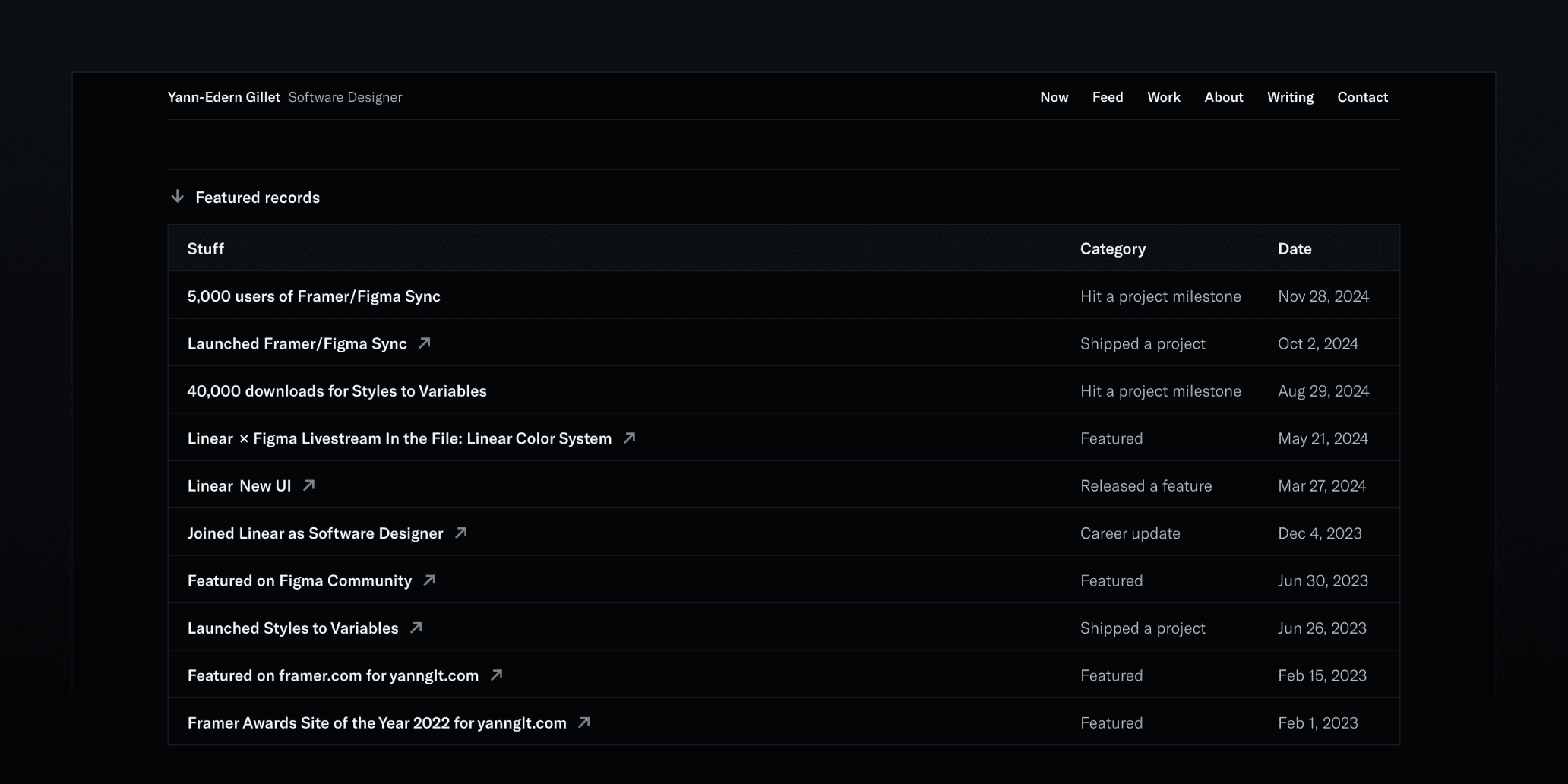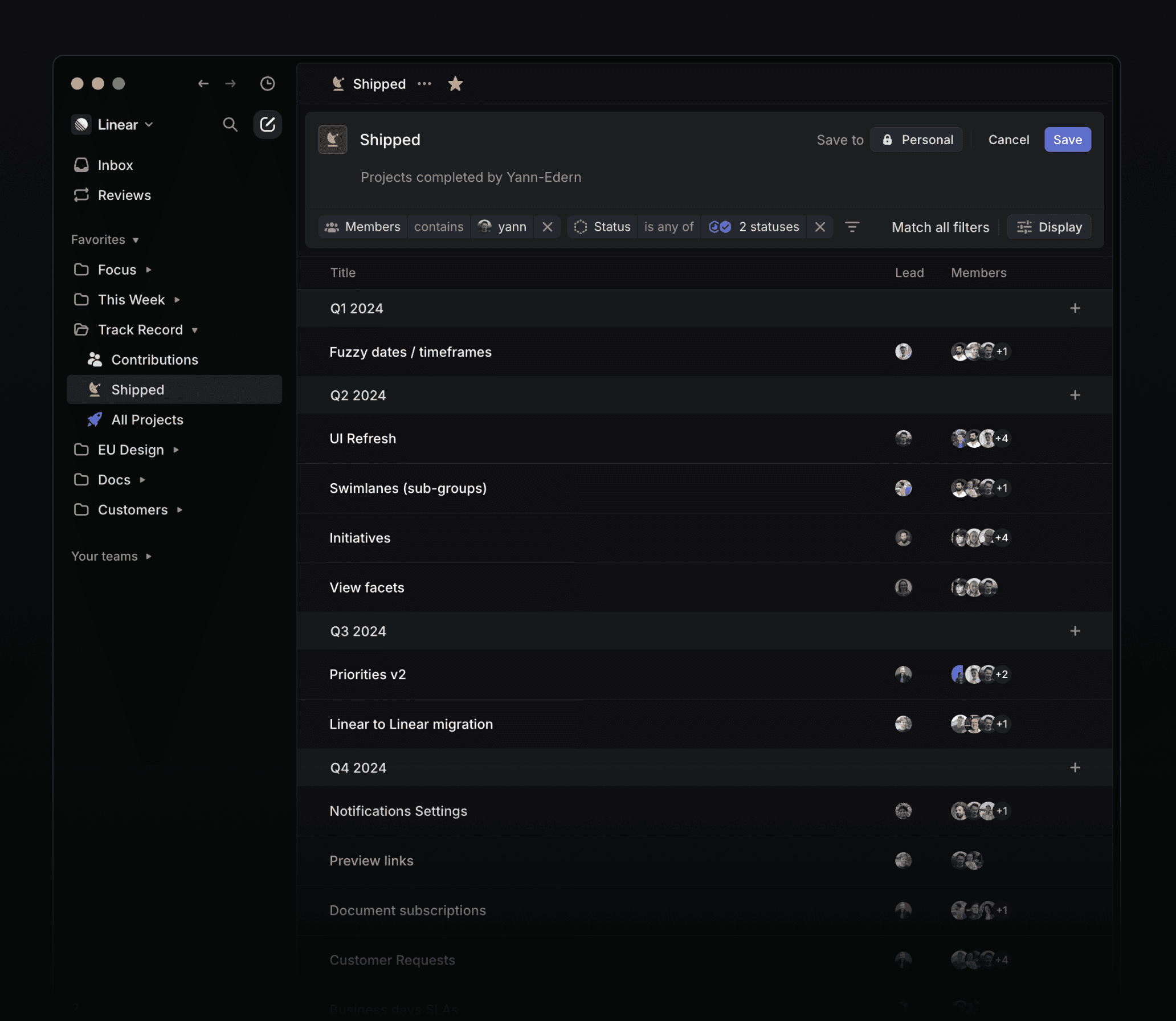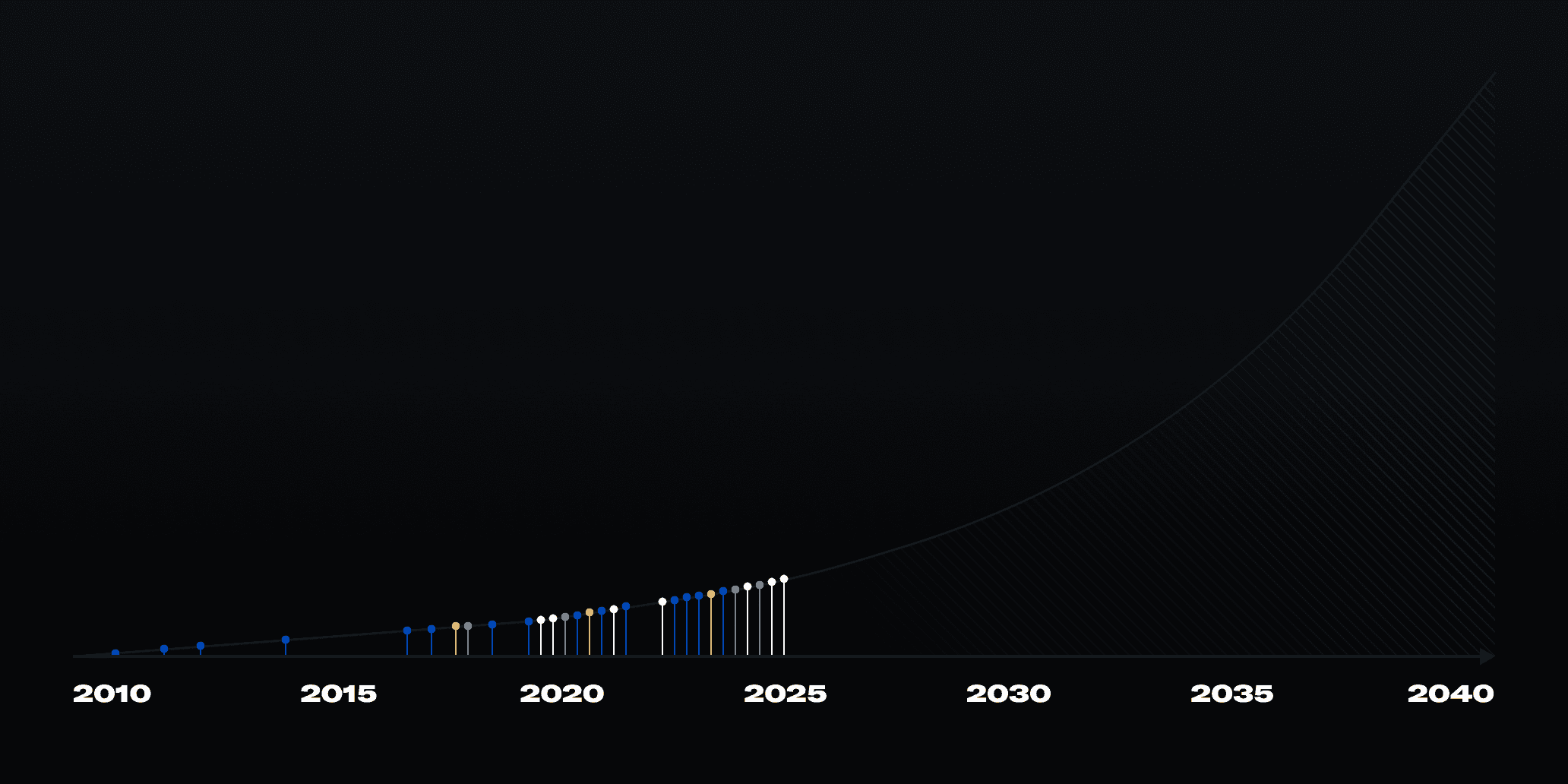Keeping track of achievements
Deep dive into how track records accelerate career growth, by helping you combat imposter syndrome and build lasting momentum.
Jan 28, 2025
I recently reflected on a few thoughts I had when it comes to going beyond the traditional portfolio, where I mentioned track records.
Disclosure: This is not rocket science; it is simply my own experience. I’m definitely interested in hearing people's opinions about it and the various topics mentioned, particularly about building confidence. DMs are open!
You can browse my track record here.
The power of a track record
Well, let’s be honest. There is nothing new here. Track records have been used for quite some time by other professionals as a way to assess growth and performance: athletes, investors, and entrepreneurs, for example, just to name a few.
Another comparison quite easy to make is companies — startups, to be precise, and their changelog¹. A vast majority of them are in a blog-like format but with the democratization of wrap formats, you can easily see a company’s direction.

I can’t pinpoint exactly what triggered the creation of my own track record two years ago — probably spending quite a lot of time on studying a lot of startups changelogs. I think I was also inspired by what Andy Chung did with read.cv².
So what makes it a tool for growth? It may sound counterintuitive, but I think the first audience it serves is you, your craft, and your thoughts. I’ll expand on this right after, but being able to do both reality checks and deeper reflections over long periods of time is key to personal growth. If you’re subject to imposter syndrome and its related feelings, you’ll probably agree with that³.
And like every tool or method that helps your inner self, it will shine externally. Not in a couple of days or weeks, but it’ll pay off — we’re running a marathon here, not sprints.
Combatting imposter syndrome
I already wrote some words about this in my article dedicated to my one year mark at Linear, but tl;dr is something like that:
Accept self-doubt as a natural part of growth
Focus on controllable factors and trust the process
Share feelings with trusted people
View it as a sign of doing meaningful work rather than a weakness
Use it as motivation for personal development
So what do we have here? If you create focus, do meaningful work, and trust yourself, you’ll be in a great area. That’s exactly what a track record helps you accomplish.
Another aspect I appreciate about this format is that it levels the playing field. Unlike case studies, where individuals skilled in visual work often have an advantage⁴, this approach focuses on a track record. The goal is simply to have great content to log.
It's never about quantity; it's always about quality and velocity. I strongly believe in learning how to produce high-quality work first, then figuring out how to do it faster. Consequently, this track record serves as extra motivation to help you create your best work and infuse it with passion.
Building confidence and momentum
Now that we’ve covered quick reality checks, let’s talk about long-term reflection. It’s both easier and more effective than putting excessive pressure on yourself daily. To be precise, I would say that putting care into your work and making sure you’re aligned with your goals for day-to-day tasks and evaluations for quarterly reviews is essential. If you do the opposite, you risk being too hard on yourself, doubting your direction, and losing clarity.

Regarding velocity, you’ll realize soon enough that some days (and even weeks sometimes!) are just off — and that’s okay. The quicker you recognize it, the easier and faster it is to correct midway. This comes with experience and knowing yourself.

Discipline — and how we approach it, is a key factor in this process. It’s often easier to fall into comparison, envy, or even jealousy, rather than staying focused on your own growth. Doing your best every day to be able later on to log a great project or milestone is hard, but the feeling is unique and ten times more powerful than beating your rivals.
Creating your own track record page
If you’re starting a track record, avoid reviewing it for the first couple of months. Focus on doing your best work so you can add valuable entries. You’ll have a clearer picture after six months.
Start small; start with your previous records and dedicate a bit of time each week, like one hour every weekend, to capture all of these previous projects and milestones. Then, every time you accomplish something, log it. It should be part of your project lifecycle.
As an individual contributor, tracking your projects is fairly straightforward. I keep a view in Linear where all the projects I’ve contributed to are listed.

You don’t need more than a spreadsheet to start a track record. Notes are fine, but they don’t allow filtering, sorting, or batch editing, but maybe that's fine. A simple CSV export will give you everything you need to share it publicly with a CMS or just convert it into a JSON to parse it on your website.
On categories, I use these ones:
Career: new job, scope or titles
Featured: any media that mentions your work
Contribution (Major/Minor): changelog posts
New side-project: you finally shipped this cool idea
Side-project milestone: this cool idea turned into something
I also feature specific entries as the most meaningful ones to spare everyone from scrolling to find something interesting. The next step is adding search and filters for me.
A journey of growth
This journey will be quite long, and it’s the whole purpose of it. Make it long, make it impactful, make it rich of great contributions. A track record won’t eliminate imposter syndrome, but it’s a powerful tool to counterbalance it. Try to do it over a couple of months, and see for yourself the momentum that you built.
It’s not a magic fix, though. You’re the only one contributing to it but each log is the addition of mutual effort with your team, partners and clients, so link to the original announcement and if you make a case study out of it, make sure to credit every one.
Track records start as private tools, but making them public can influence both your work and how you approach it.
Footnotes and references
Latest notes
Faster loops, bigger playgrounds, stronger craft
Reflecting on my second year at Linear — designing for AI, deeper async collaboration, and the lessons that shaped this chapter.
Dec 4, 2025
Analog by Ugmonk: my year of tangible productivity
A look at how one physical tool improved my planning, focus, and setup.
Jul 9, 2025
Introducing Inside Thunderstorm
A new video series documenting the behind-the-scenes of building the next major version of my website — the twelfth in ten years.
Jun 3, 2025
